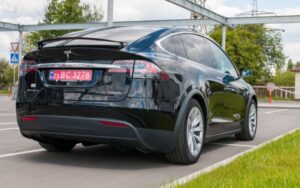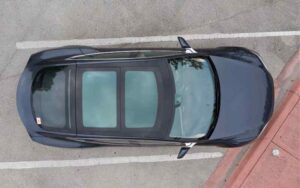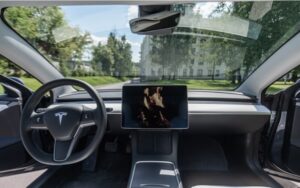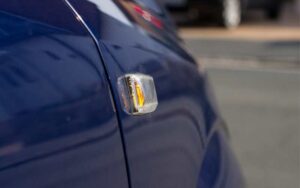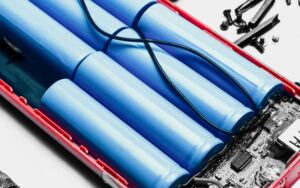Tesla BYD Batteries: What’s the Buzz?
Last updated on September 21st, 2023 at 09:55 am
Quality batteries are one of the secrets to the great performance of electric vehicles.
And for a top brand like Tesla, it’s no surprise that they utilize some of the best batteries in the market.
Tesla BYD batteries are a new development that has attracted many questions from the public. Are these batteries good for Tesla? Are they better than Tesla’s original batteries?
If you want to learn about Tesla BYD batteries, read this guide.
Tesla BYD batteries are a recent development introduced in its new German Model Y version. This battery is a rechargeable Lithium-ion type, just like the original Tesla batteries. It has a (LFP) Lithium Iron Phosphate chemistry, which makes it safer. Also, several reports showed the BYD battery increased the charging speed of the Tesla Model.
In this guide, I’ll explain all you need to know about BYD batteries and whether they’re good for Tesla.
Also, I’ll discuss the charging time of the BYD batteries and how long they last on a full charge.
Ultimately, you’ll know the life expectancy of the Tesla BYD batteries and whether they’re better than the Tesla 4680 batteries.
What Are BYD Batteries?
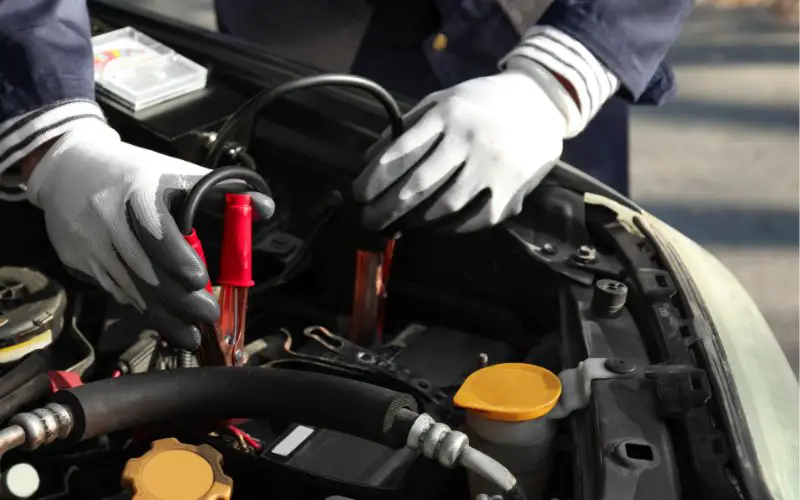
A BYD battery is a Lithium-ion battery with Lithium Iron Phosphate chemistry. The LFP is the chemistry of choice because of the higher level of safety it provides to electric vehicles.
The acronym BYD is short for “build your dreams.” It’s a Chinese company that began in 1995 as a battery producer but has expanded to various sectors, including automobile and electronics.
There are various models of BYD batteries, and the company continues to produce new, improved models for better performance.
One of the challenges of the BYD LFP battery is the smaller density. This small density means it requires more area to reach the required battery backup like smaller lithium-ion batteries
However, BYD tackled this issue by introducing Blade batteries, the company’s latest development.
The blade batteries don’t come in modules; their cells feature a single-cell design.
This design increases the battery energy density while using less space. Also, it allows the battery to charge faster.
Additionally, the safety of the blade battery has made it more popular. The BYD engineers conducted a nail penetration test on the blade batteries to test their safety.
And according to BYD, the batteries had passed with far greater expectations. The batteries neither released smoke nor fire, and the surface temperature did not exceed 140° F.
Does Tesla Use BYD Batteries?
Yes, Tesla uses BYD batteries. It uses this battery for its Model Y crossover produced in Germany.
First, Tesla uses four types of batteries for the different car models, which include the 18650, 2170, 4680, and Prismatic batteries, with varying chemistry.
The Model Y is an upgrade of the Tesla Model 3 and has undergone various upgrades since its first production.
It has utilized different battery types, and its current model comes with a Tesla auto-produced battery, the 4680.
However, recent reports have said that Tesla has started using the BYD batteries in its Model Y vehicle produced in the Berlin Gigafactory in Germany.
This report followed several rumors and then confirmation by a BYD manager.
Until recently, the Chinese manufacturer CATL was the sole supplier of LFP batteries for Tesla’s Model Y. However, the brand is also partnering with BYD for its battery supply.
Also, several other reports have surfaced that Tesla and BYD are ending their partnership soon, stopping the supply of BYD batteries to Tesla.
Conversely, Tesla and BYD have confirmed a new partnership.
Hence, the new Model Y crossover may continue to witness production with BYD batteries in Germany and possibly across other manufacturing sites.
Are Byd Batteries Good for Tesla?
Yes, BYD batteries are good for Tesla. Not only do they provide quality performance, but they’re also safe to use, allowing users to drive at reduced risk.
BYD has been in battery production for over twenty years. It’s one of the top electric vehicle battery manufacturers that focuses on lithium-ion batteries.
These battery types are energy efficient and are less prone to overheating at high temperatures.
Moreover, the BYD blade batteries feature a durable material, Lithium Iron Phosphate, which lasts long.
They’re cobalt-free, and the LFP chemistry makes them safer than conventional lithium-ion batteries.
In addition, these batteries offer higher charging speeds for the Tesla Model Y and provide a good driving range.
Below are some of the reasons BYD batteries are good for Tesla
#1. Safety
One of the greatest value of the BYD blade batteries is the safety it guarantees.
The brand launched the “Blade Battery” to maximize safety while providing excellent strength, power, range, and durability.
The cobalt-free batteries are safer than other lithium-ion batteries. The LFP chemistry of the cathode provides a stronger bond that can withstand greater heat and damage.
Also, the blade battery has undergone several safety tests and met the requirements.
For instance, it released no smoke or fire during the nail penetration test, and the surface temperature remained within 86–140 ° F.
Additionally, it didn’t result in an explosion after being crushed, bent, and exposed to extreme temperatures.
These batteries are suitable for use in a wide range of temperatures.
#2. High Charging Rate
One of the most spoken features of the BYD blade batteries is the fast charging rate.
Various users of the BYD battery-equipped Model Y vehicles reported a faster charging speed than the CATL batteries used in Model Y.
According to Notebookcheck, the BYD Model Y maintained a peak of 172 kW charging until it hit 50% charge. In contrast, the CATL Model Y couldn’t maintain a 172 kW charging speed.
Consequently, BYD batteries offer higher charging speeds, making them suitable for electric vehicles, including Tesla.
#3. One Cell Design
The single-cell design is another feature that makes the BYD blade battery good for Tesla. The normal Tesla batteries feature several cells arranged into modules.
However, Tesla BYD batteries have a single-cell unit. This single-cell design increases space utilization by 50%.
BYD cell-to-pack (CTP) technology allows more battery cells in a compact space, improving energy density.
How Fast Do BYD Batteries Charge in a Tesla?
The BYD batteries charge very fast in a Tesla. The BYD blade battery technology features an ultra-fast charge that allows its vehicle to charge 0–80% in under 50 mins.
Reports have claimed that these batteries charge faster than the Tesla CATL batteries in the Model Y.
As I’ve earlier established, user reports showed that the BYD blade batteries maintained a peak of 172 kW charging for a long time. It only showed a decline when it reached 50% charge.
Furthermore, according to Carnewschina, the batteries can charge from 11%–71% in 15 minutes.
However, several factors can affect how fast your car battery charges.
Below are some factors that can affect the charging rate of your BYD batteries in your Tesla.
#1. State of Charge
The state of charge (SoC) refers to how full the battery is. A lower SoC close to 0% charges faster than a higher SoC.
So, your Tesla BYD batteries will charge faster if it’s near empty.
#2. Temperature
The temperature of your battery also determines how fast it’ll charge. At extreme temperatures, the charging rate diminishes.
Although Tesla has a Battery Management System (BMS) that keeps track of the battery’s health, adverse temperature still affects the charging rate.
So, on a hot or cold day, the BYD batteries will charge slower in your Tesla.
#3. Loads
Suppose you charge your battery while in the car; some of the car’s load will receive some of the battery’s energy.
Such loads include air conditioning or heating systems, radio, lights, etc.
These loads will affect your charging speed.
How Long Do Tesla BYD Batteries Last on Full Charge?
Users have reported that the Tesla BYD batteries can last 273 miles (440 Km) on a full charge.
According to Csevtech, the New Model Y equipped with the BYD blade battery still utilizes the integrated casting technology for the anterior and rear body.
The 55 KWh battery has a range of 273 miles on a full charge.
Also, the Blade battery capacity is lower than the Tesla Model Y Performance and Long-range version. The original Model Y has a battery capacity of 82 kWh.
Additionally, the Performance version has a range of 303 miles on a full charge, while the Long-range has a range of 330 miles.
However, the range of your vehicle can be affected by speed, elevation changes, and weather conditions.
What Is the Life Expectancy of a Tesla BYD Battery?
The life expectancy of Tesla BYD batteries is an average of 10 years. First, BYD offers a standard 10-year warranty for its batteries based on two factors.
These factors are the residual capacity after 10 years and the energy all through based on charge and discharge cycles.
However, the warranty requirements can differ based on location.
Also, BYD claims their battery has an ultra-lifespan and can support driving mileage of more than 621,000 miles (1,000,000 Km).
That means the batteries can last up to 25 years and more.
Although all batteries lose capacity with time due to internal cell degradation, how long your car batteries last depends on how you handle them.
Below are some of the factors that can affect the lifespan of Tesla BYD batteries
- Exposure to extremely high or low temperature
- Supercharging frequently
- Fast-charging frequently
- Allowing the battery to remain at 0% or 100% for a long time without using it
Are Tesla Batteries Similar to BYD Batteries in Terms of Function and Technology?
Tesla batteries explained: Tesla and BYD batteries differ in terms of technology and function. Tesla batteries use lithium-ion cells, while BYD batteries commonly use lithium iron phosphate cells. Tesla focuses on long range and high-performance vehicles, whereas BYD emphasizes on energy storage and electric public transportation solutions.
Is It Possible to Replace a Tesla Low Voltage Battery with a BYD Battery?
When considering replacing a Tesla low voltage battery with a BYD battery, compatibility is essential. While both brands offer impressive performance, it’s crucial to match the specifications and electrical requirements. Consulting an expert is recommended to ensure a seamless integration and optimal functioning of the low voltage battery in your Tesla vehicle.
Is Vampire Drain a Concern with Tesla BYD Batteries?
Vampire drain is a legitimate concern for Tesla and BYD batteries. When an electric vehicle is parked and not in use, the battery continues to drain power. This perennial energy loss affects the overall battery life and range. To mitigate vampire drain, Tesla and BYD utilize power-saving features and software updates to minimize the impact and ensure optimal battery performance for their electric vehicles.
Are Tesla BYD Batteries Better Than the 4680 Batteries?
The Tesla BYD and 4680 batteries are great batteries with distinctive features. They’re both used in different Model Y versions.
The BYD Blade batteries are in the Model Y crossovers produced in Berlin, Germany.
They’re lithium-ion rechargeable batteries with a Lithium Iron Phosphate chemistry, making them safer than other lithium-ion batteries.
Also, these batteries arrangement is a single-cell unit, making them space efficient and lighter.
In addition, the Blade battery is the only lithium-ion battery to have passed the nail penetration test. Furthermore, the Model Y with blade batteries showed increased charging speed.
On the other hand, the 4680 battery is Tesla’s latest production and an upgrade of the 2170 batteries used in Model 3 and Y.
The brand produces these batteries rather than getting supplies from third-party manufacturers, as with other battery types.
However, Panasonic, Tesla’s largest battery supplier, also produces the 4680 battery in Japan.
The 4680 batteries are lithium-ion rechargeable but have a Nickel Cobalt Manganese chemistry (NCM).
They comprise thousands of cells arranged in modules, thereby occupying more space. Also, they’re more energy dense.
Below is a table comparing the Tesla BYD batteries and the 4680 batteries.
| Features | Tesla BYD Blade Batteries | Tesla 4680 batteries |
|---|---|---|
| Chemistry | Lithium Iron Phosphate | Nickel Cobalt Manganese |
| Structure | Single-cell prismatic | Cylindrical |
| Cell Size | 960mm in length, 90mm in width, and 13.5mm in height | 46mm in diameter and 80 mm in length |
| The range on a full charge | 273 miles | 279 miles |
| Standard Voltage | 3.2 V | 3.7 V |
| Maximum charging voltage | 3.65 V | 4.5 V |

Hey, I’m Michael Davis, a 35-year-old with a degree and a love for cars and tech. Since I was a kid, cars have been my thing—so much that I even thought they ran on magic beans! Fast forward, and I’ve built Vehicle Army, your one-stop-shop for easy-to-understand car facts.

